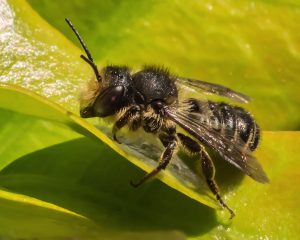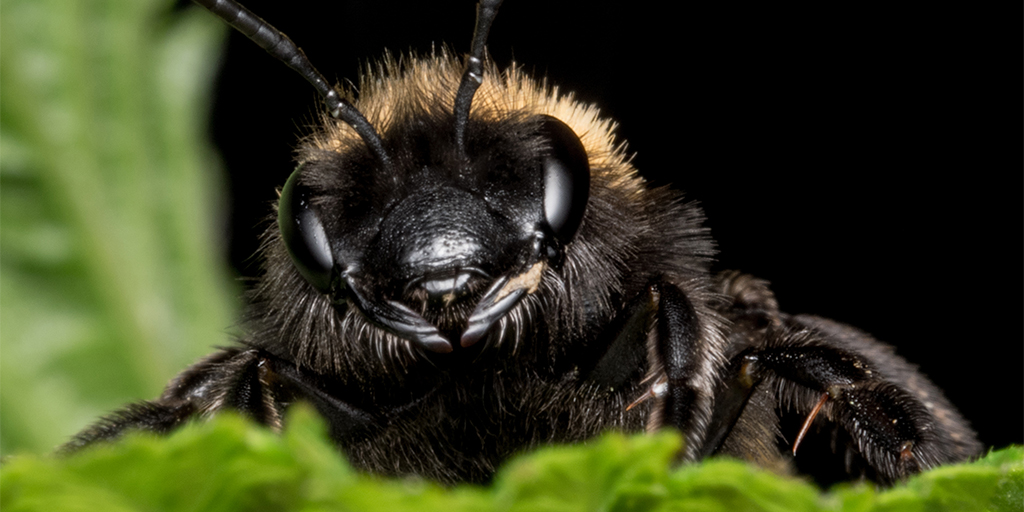Solitary Bees: An Essential Element of our Food Chain
October 16, 2018
Written by Roger Kiernan, Seven Sisters Volunteer Ranger. All images © Roger Kiernan.
We are all familiar with honey and bumble bees, known as social bees as they live in communities. However, of the nearly 250 species of bees in the UK about 90% are not social, they live alone and are known as solitary bees. These can be separated into two groups depending where they nest and this article is about the ground nesters, commonly called mining bees which account for about 75% of all solitary bees.
The life of female mining bees is very different from that of social bees. A queen honey bee can lay 2,000 eggs per day to create a colony of 50,000 worker bees to support her and offspring. In contrast, a female mining bee lays a total of five to 15 eggs in her lifetime, lives alone and gets no help feeding herself and offspring.
The lifecycle of mining bees begins when they emerge from their underground cells in the spring. The males emerge first, and when they find a female, die soon after mating. The females have much more work to do.
 After mating, females seek sites for their nest burrows. They construct five or more small cells to which they add a ball of pollen mixed with nectar to each for the larvae to eat once hatched. Then they lay an egg on each food ball. The male eggs are laid in cells closest to the burrow entrance, so they can emerge first. The female then seals each cell with mud or leaf and dies soon after. The developing larvae eat the pollen and after about six weeks will spin a cocoon, pupate and eventually through metamorphosis change into a bee. The following spring the hatched bees emerge from the burrow to mate and continue the cycle.
After mating, females seek sites for their nest burrows. They construct five or more small cells to which they add a ball of pollen mixed with nectar to each for the larvae to eat once hatched. Then they lay an egg on each food ball. The male eggs are laid in cells closest to the burrow entrance, so they can emerge first. The female then seals each cell with mud or leaf and dies soon after. The developing larvae eat the pollen and after about six weeks will spin a cocoon, pupate and eventually through metamorphosis change into a bee. The following spring the hatched bees emerge from the burrow to mate and continue the cycle.
Mining bees are not as effective carriers of pollen as honey bees, so they tend to spread the pollen around more plants making them fantastic pollinators. So, although solitary bees do not produce honey they are of vital interest to our farmers and ourselves as their pollination activity is responsible for at least 30% of our food.
Sadly, the solitary bee population is decreasing for many reasons including increasing use of chemicals in farming, fewer wildflowers and loss of suitable habitat for nests. This could have a serious impact on farming yields.
Solitary bees are not aggressive. The males have no sting and females will only sting if handled roughly. Learn to love them, we need them as an essential element of our food chain.

